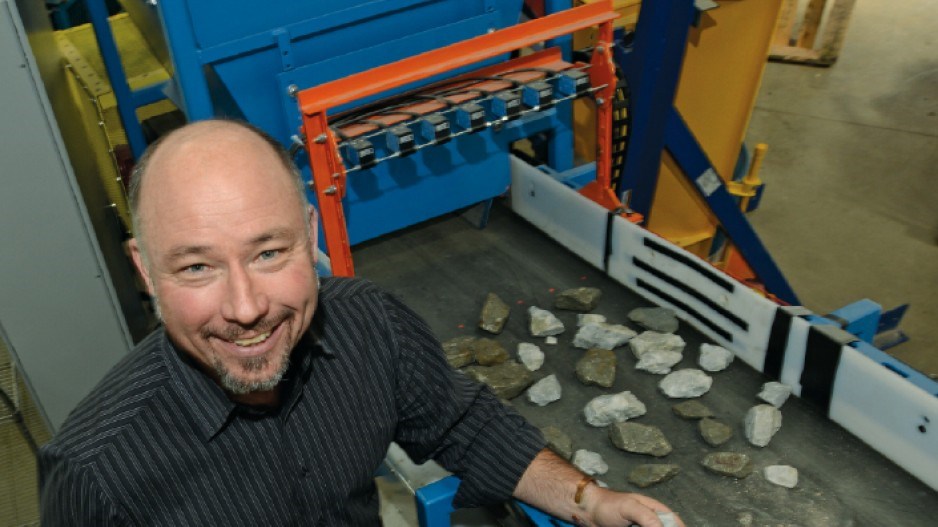Mining is one of the world’s most energy-intensive industries. It is estimated, for example, that 15% of Australia’s total energy consumption is used to dig things out of the ground.
And as the richest deposits become depleted and mining companies move into less productive, more remote areas, energy inputs will need to increase – which is why Chrysalix Energy Venture Capital thinks a Vancouver’s MineSense Technologies Ltd. might have struck technological gold.
Chrysalix recently took a $2.5 million minority stake in MineSense. The venture capital firm sees huge potential for MineSense’s technology to improve efficiencies and lower energy costs for metal and coal-mining companies, not to mention significantly shrink their environmental footprint.
The MineSense sensor technology can be used to quantify metal or coal content in rock, which would allow mining companies to pre-sort ore, eliminating mountains of waste, while shrinking mine site footprints and reducing water consumption.
It has also developed software that uses that information to help build efficiencies into the mining process.
“It’s a story about process efficiency, where there will be much better use of energy, less water, less tailings produced, but above all it’s the very compelling economics that goes along with it,” said Chrysalix partner Charlie Haythornthwaite.
“The mining industry has just had its best boom decade in its history, but it’s the next 10 to 20 years that it’s going to face some very different and very tough challenges.”
Earlier this year, MineSense received $1.5 million in funding from the federal government’s Sustainable Development Technology Canada program. The company has also received investments from several mining companies to develop project-specific machinery.
“The Chrysalix money allows us to truly build the product line that will sell into the general marketplace,” said MineSense founder and CEO Andrew Bamber.
The actual ore content of mined rock can be very low. In the case of copper, for example, the “cutoff grade” – the point where it is deemed not worth mining – can be less than 1%. That means enormous amounts of rock containing little or no ore is needlessly ground and baked.
Conversely, rock that is discarded can sometimes contain ore that has been missed. That’s not only leaving money on the ground, it’s also leaving behind ores that can cause acid rock drainage.
“There is a substantial amount of ore – we estimate between 5% to 15% of ore – trapped inside waste,” Bamber said. “You’ve got waste sitting in ore, but you’ve also got ore sitting in waste.”
The MineSense technology uses three kinds of sensors, which would typically be used in any of the three stages of the mining process:
•a high-frequency electromagnetic spectrometer for rapid mineral quantification;
•high-speed X-ray fluorescence; and
•laser-induced breakdown spectroscopy.
The ShovelSense sensor is attached to the scoop of a mine shovel and gives the operator an instant colour-coded reading that tells operators whether the rock contains any ore at all, allowing them to discard rock that doesn’t.
Next, the rock would go through X-ray sensors on BeltSense’s belt-driven machine that further refines the content quantification. Finally, SortOre attenuates the detection so that the material can be sorted rock by rock.
MineSense already has customers in Australia, Quebec, Chile and South Africa testing various aspects of the technology, but none in B.C. yet.
Pilot testing at a variety of mines has shown a 30% increase in recovered metal and a 15% decrease in cost, Bamber said.
“For a typical operation we’re talking about $1 billion net present value increase.”




